Illapa: Powerful Master Of Clouds, Rain And Hail – Worshipped By Inca People
A. Sutherland - AncientPages.com - Illapa (aka Apu Illapu, Ilyap'a, Katoylla) is considered by many as one of the most important deities in the Inca pantheon.
Staty av Pachacutiq i Machupicchu Pueblo i Peru. Image credit: Elemaki - CC BY 2.5
He had a number of overlapping identities located in several different places. One of his powerful identities we have described earlier here.
This very popular weather god associated with rain was frequently imagined as a man in the sky, dressed in shining garments and carrying a sling and a war club.
The lightning was believed to be the flashing of his clothing, and the thunder was the crack of Illapa’s sling. Illapa, venerated in areas of the central highlands of Peru and northern Chile, had the power to make rain, hail, and thunder; he also mastered clouds. His activities were crucial because the sky was the source of both sun and rain for sustaining crops, according to the Inca beliefs.
They prayed to Illapa for rain and protection from drought. His figure was worshiped at Coricancha (Qorikancha), where Illapa had his own temple in the religious complex in the Inca capital at Cuzco, which contained the Temple of the Sun, the most sacred place in the Inca religion and the very center of the Inca world.
Illapa’s wasi (temple) contained his cult statue and religious objects associated with him. He was depicted with his face covered by a headdress to symbolize the veiling of the thunder by the clouds.
During the late sixteenth century the Spanish compared his figure to that of the apostle James, whose horse galloped across the heavens producing the sound of thunder.
Sacsayhuamán, Cusco, Peru. Image credit: Diego Delso - CC BY-SA 4.0
According to a myth, Illapa filled a jug of water from the Milky Way and gave it to his sister to care for. It rained only when Illapa broke his sister's water jug, causing the rain to fall.
The Quechua people in the Peruvian Andes associated Illapa with Saint James, the patron of Spain. They celebrated both god Illapa and Saint James on July 25. The flashing swords and the explosions from the Spanish soldiers’ muskets reminded the Inca of lightning followed by a clap of thunder.
Sacsayhuaman, a true wonder of prehistoric South America, is constructed of flawlessly fitting cyclopean boulders, which zigzag across the plateau for approximately 400 meters.
It is believed that Sacsayhuaman was created during the time of Pachacutec or Pachacuti Inca Yupanqui (in Quechua: Pachakutiq means "he who overturns space and time" and Yupanki means "with honor") , who made it to the ceremonial center in honor of the great god Illiapa (god of thunder), which helped him in his struggles.
Therefore, it is said that some walls of Sacsayhuaman are shaped like thunder (zigzag).
Written by – A. Sutherland AncientPages.com Staff Writer
Copyright © AncientPages.com All rights reserved. This material may not be published, broadcast, rewritten or redistributed in whole or part without the express written permission of AncientPages.com
Expand for referencesReferences:
John E. Staller,Brian Stross, Lightning in the Andes and Mesoamerica
de Gamboa, Pedro Sarmiento. History of the Incas
More From Ancient Pages
-
 People With Blue Eyes Have One Common Ancestor Who Appeared 10,000 Years Ago
Civilizations | Feb 24, 2017
People With Blue Eyes Have One Common Ancestor Who Appeared 10,000 Years Ago
Civilizations | Feb 24, 2017 -
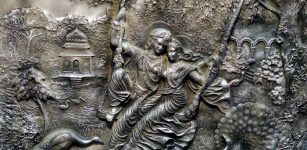 Mysterious Forest Of Treasure – Why Is It Forbidden To Stay In Nidhivan After Sunset?
Featured Stories | Nov 24, 2021
Mysterious Forest Of Treasure – Why Is It Forbidden To Stay In Nidhivan After Sunset?
Featured Stories | Nov 24, 2021 -
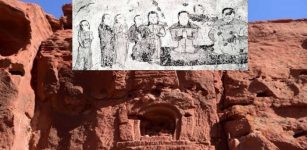 Seven 1,600-Year-Old Arjai Grottoes With Frescoes – Restored
Archaeology | Jul 11, 2020
Seven 1,600-Year-Old Arjai Grottoes With Frescoes – Restored
Archaeology | Jul 11, 2020 -
 3,300-Year-Old Mycenaean-Like Seal And Dagger Discovered In Turkey
Archaeology | Jul 22, 2022
3,300-Year-Old Mycenaean-Like Seal And Dagger Discovered In Turkey
Archaeology | Jul 22, 2022 -
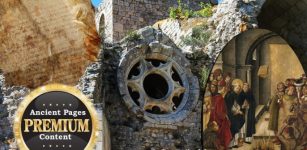 Secrets Of The Cathars – Mysterious Manuscript Of Jesus And His Pre-Flood Language
Featured Stories | Jan 18, 2019
Secrets Of The Cathars – Mysterious Manuscript Of Jesus And His Pre-Flood Language
Featured Stories | Jan 18, 2019 -
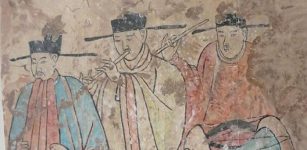 Ancient Fresco Tomb Dated A 1000-Years Ago Was Accidentally Discovered In Northern China
Archaeology | May 5, 2020
Ancient Fresco Tomb Dated A 1000-Years Ago Was Accidentally Discovered In Northern China
Archaeology | May 5, 2020 -
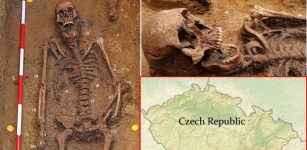 Young Warrior’s Grave Dated To A Sixth Century Unearthed At Langobard Necropolis In Czech Republic
Archaeology | Jul 5, 2022
Young Warrior’s Grave Dated To A Sixth Century Unearthed At Langobard Necropolis In Czech Republic
Archaeology | Jul 5, 2022 -
 Mystery Of The Giant Hand At The Temple Of Hercules
Featured Stories | Jul 17, 2019
Mystery Of The Giant Hand At The Temple Of Hercules
Featured Stories | Jul 17, 2019 -
 Suomenlinna Fortress: Impressive ‘Castle Of Finland’ Has Rich History
Featured Stories | Feb 13, 2016
Suomenlinna Fortress: Impressive ‘Castle Of Finland’ Has Rich History
Featured Stories | Feb 13, 2016 -
 Advanced Ancient Technology: Could Ancient Peruvians Soften Stone?
Ancient Technology | May 7, 2015
Advanced Ancient Technology: Could Ancient Peruvians Soften Stone?
Ancient Technology | May 7, 2015 -
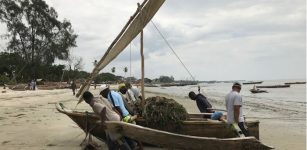 First Detailed Academic Study Of East African Maritime Traditions Shows Changes In Boatbuilding
Archaeology | May 11, 2022
First Detailed Academic Study Of East African Maritime Traditions Shows Changes In Boatbuilding
Archaeology | May 11, 2022 -
 Is This The World’s Oldest Joke?
Featured Stories | Feb 21, 2014
Is This The World’s Oldest Joke?
Featured Stories | Feb 21, 2014 -
 Mysterious Unknown Caves And Tunnels Discovered Beneath The Olsztyn Castle
Archaeology | Jul 31, 2020
Mysterious Unknown Caves And Tunnels Discovered Beneath The Olsztyn Castle
Archaeology | Jul 31, 2020 -
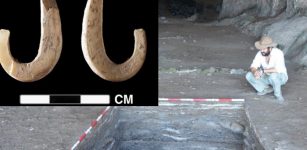 Late Pleistocene Human Colonization – What Makes Our Species Unique Compared To Other Hominins?
Archaeology | Apr 29, 2020
Late Pleistocene Human Colonization – What Makes Our Species Unique Compared To Other Hominins?
Archaeology | Apr 29, 2020 -
 How Did 20th-Century Philosophers Explain Ghosts And Other Spooky Subjects?
Featured Stories | Nov 8, 2024
How Did 20th-Century Philosophers Explain Ghosts And Other Spooky Subjects?
Featured Stories | Nov 8, 2024 -
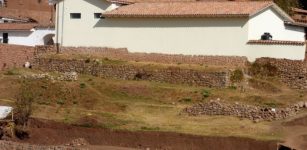 Impressive Inca Agricultural Terraces Discovered In Cusco, Peru
Archaeology | Jan 25, 2018
Impressive Inca Agricultural Terraces Discovered In Cusco, Peru
Archaeology | Jan 25, 2018 -
 Was Organized Society A Disruptive Or Calming Force In Ancient Andes Populations?
Archaeology | Oct 24, 2024
Was Organized Society A Disruptive Or Calming Force In Ancient Andes Populations?
Archaeology | Oct 24, 2024 -
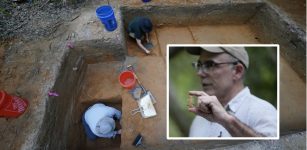 12,000-Year-Old Artifacts In Louisiana Saved By Scientists
Archaeology | Jul 18, 2023
12,000-Year-Old Artifacts In Louisiana Saved By Scientists
Archaeology | Jul 18, 2023 -
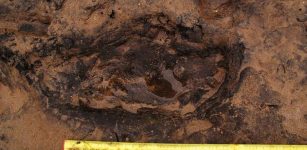 Rare Ancient Human Footprints Found On Gower Peninsula, Wales Are 7,000 Years Old
Archaeology | Mar 8, 2017
Rare Ancient Human Footprints Found On Gower Peninsula, Wales Are 7,000 Years Old
Archaeology | Mar 8, 2017 -
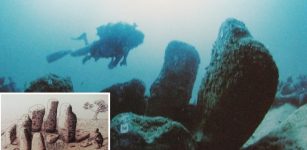 Atlit Yam – Fate Of The 9,000-Year-Old Underwater Megalithic Site With A Huge Stone Circle
Featured Stories | Jun 14, 2021
Atlit Yam – Fate Of The 9,000-Year-Old Underwater Megalithic Site With A Huge Stone Circle
Featured Stories | Jun 14, 2021


